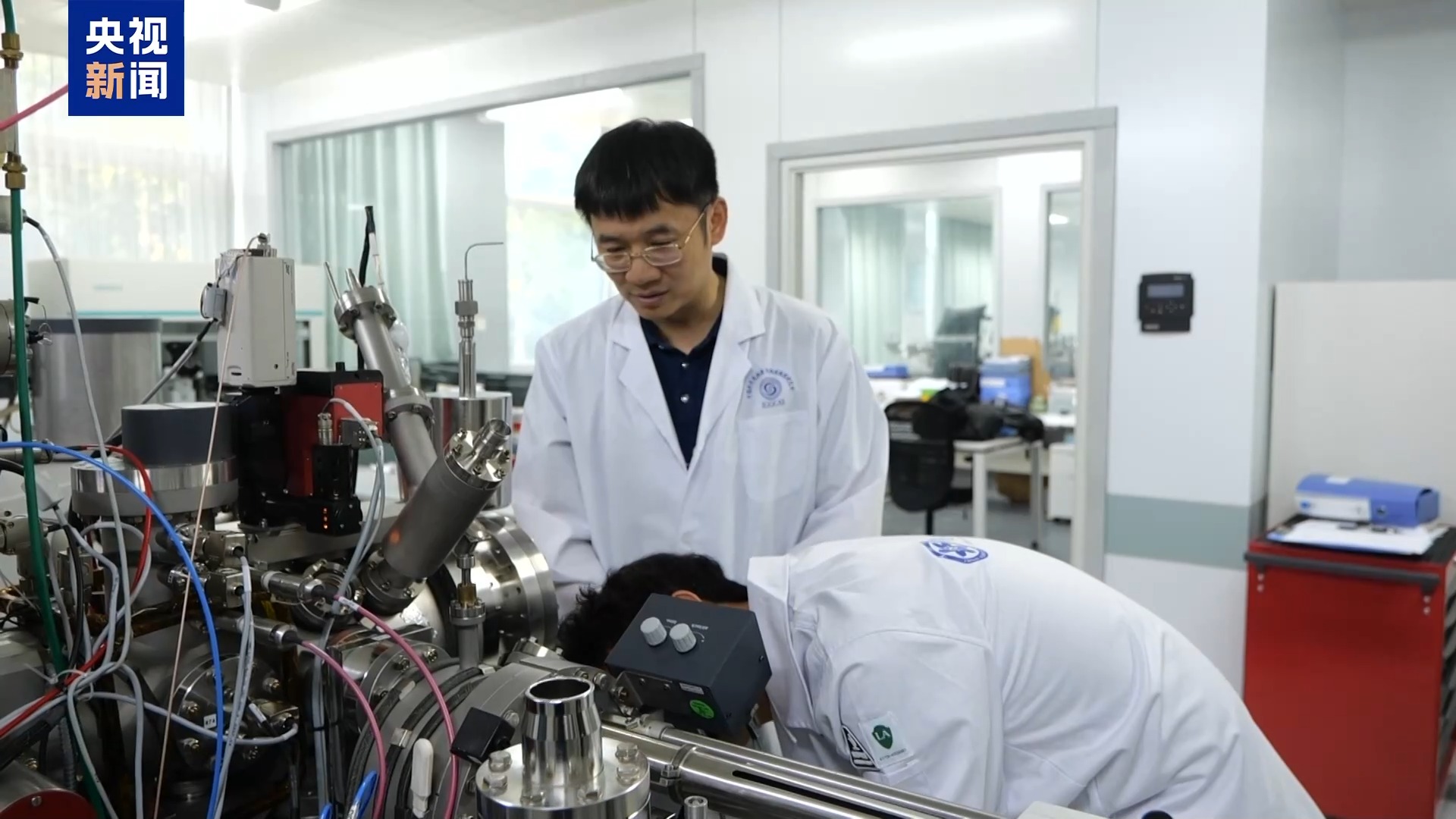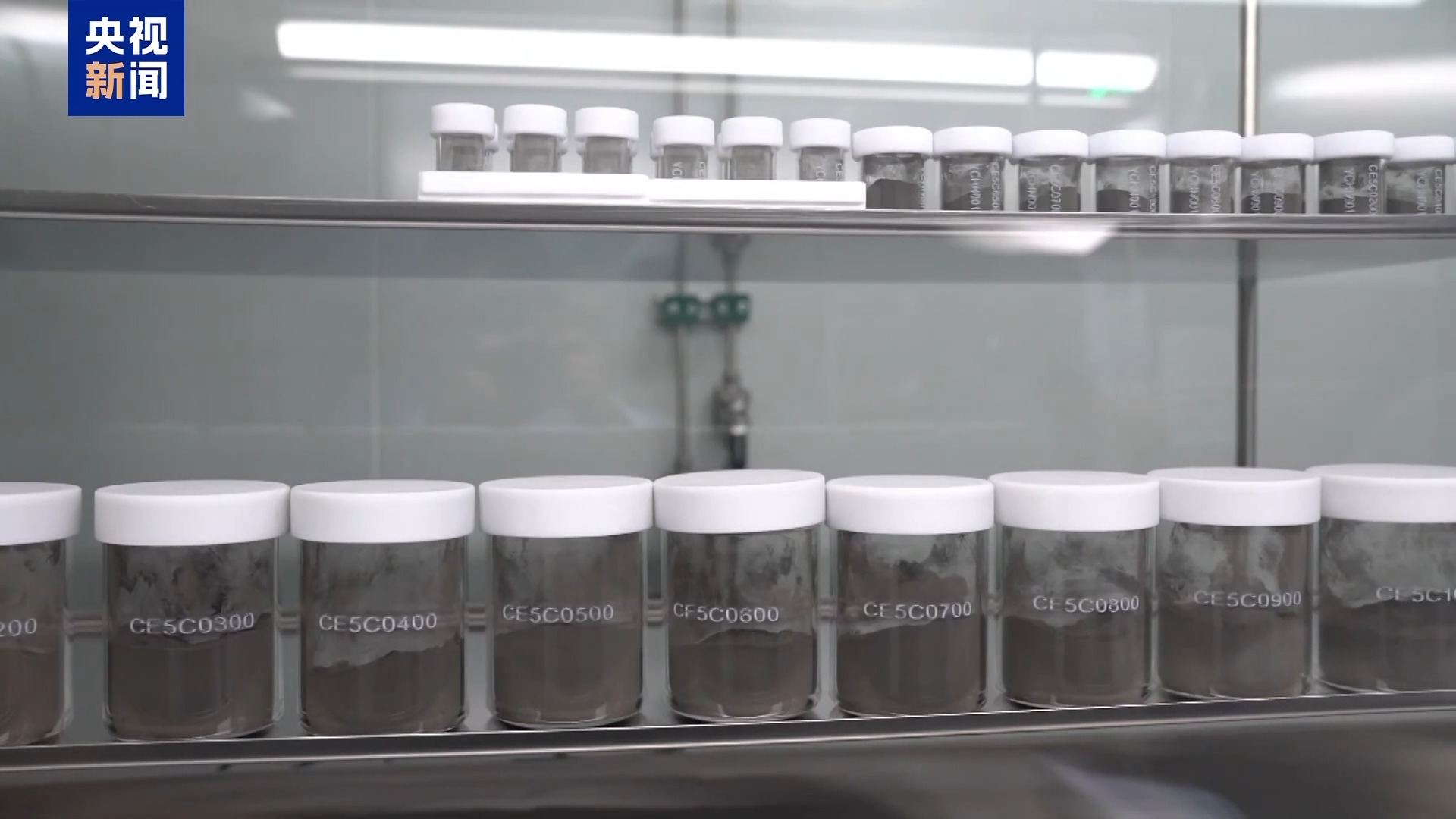

Yang Wei (L), a researcher at the Institute of Geology and Geophysics under the Chinese Academy of Sciences, studies lunar samples with his colleague in Beijing, China. /CMG
A new study by Chinese scientists on lunar samples collected by the Chang'e-6 mission from the far side of the moon has unveiled a startling discovery about the lunar mantle's reduced state.
This finding not only provides new insights into the moon's internal composition and evolution but also highlights a significant difference between the near and far sides of the moon.
The study, published in the journal Nature Communications, details how basalt samples from the Chang'e-6 landing site originated from a lunar mantle that is not only drier and more barren but also more reduced than its near-side counterpart.
The word "reduced" refers to a state where elements are in a very low oxidation state, suggesting the mantle material is either more primitive or was reduced by a major impact event.
According to Yang Wei, a researcher at the Chinese Academy of Sciences' Institute of Geology and Geophysics, this discovery challenges previous assumptions. "The redox state of a planet is a key indicator for understanding its internal processes and surface habitability," Yang explained. "At least these results prove that hundreds of kilometers deep, the near and far sides of the moon are still different. This is our new discovery."

Lunar samples are seen at a lab in the Institute of Geology and Geophysics, Beijing, China. /CMG
The scientific significance of the Chang'e-6 mission extends beyond geological analysis. China's lunar exploration program is shifting from geological studies to engineering applications, such as in-situ resource utilization and lunar soil brick manufacturing.
These studies will support future missions, including crewed moon landings and the construction of a lunar research station.
In a show of commitment to international scientific cooperation, China has shared lunar samples with the global community. To date, the China National Space Administration has distributed nine batches of lunar research samples, totaling 125.42 grams. This includes 2.18 grams of Chang'e-5 samples provided to seven institutions in six countries other than China.
Scientists worldwide have already published over 150 research papers based on these samples, underscoring the international impact of China's lunar exploration missions. (CGTN)

86-10-68597521 (day)
86-10-68597289 (night)

52 Sanlihe Rd., Xicheng District,
Beijing, China (100864)

